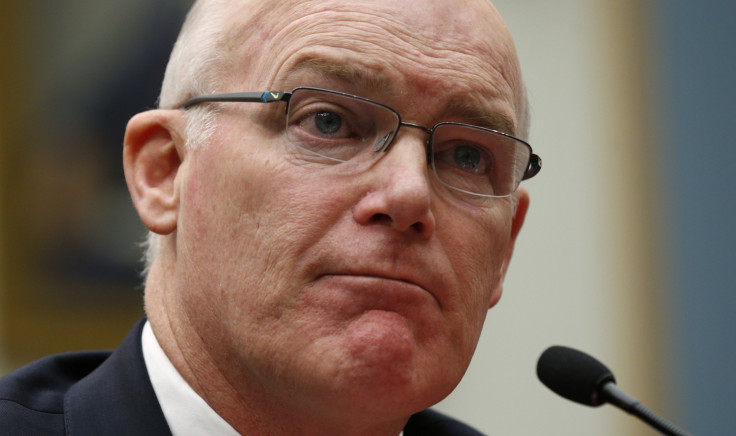Joseph Clancy Named Permanent Secret Service Director: Appointment Is Latest In Series Of Agency Leadership Shakeups

President Barack Obama’s decision Wednesday to name Joseph Clancy as permanent director of the United States Secret Service represented the latest shakeup in a tumultuous period for several of the government’s top agencies. Clancy joins Health and Human Services Secretary Sylvia Mathews Burwell and Department of Veterans Affairs Secretary Robert McDonald as top officials tasked within the last 12 months with correcting their respective departments’ well-documented failings.
Clancy, 68, had served as the Secret Service’s interim director since October 2014, when a series of embarrassing scandals forced previous chief Julia Pierson to resign from the post. Obama selected Clancy, who previously served as director of the Secret Service during the president’s first two years in office, despite an independent panel’s recommendation that Obama hire someone outside the agency for the top role.
“Joe has done an outstanding job leading the Secret Service since he returned at my request in October of last year,” Obama said in a statement, according to the Wall Street Journal. “He understands the challenges facing the agency and has proven that he’s not afraid to make the tough decisions necessary to build and maintain the Agency’s ability to carry out its mission.”
The independent panel, put together by Homeland Security Secretary Jeh Johnson, described the Secret Service as an “organization starved for leadership” – this after a series of events which undermined the agency’s reputation. Charged with repairing damage to the Secret Service’s reputation after a 2012 incident in which agency personnel solicited prostitutes while on assignment in Colombia, Pierson resigned in October after just 18 months on the job after a pair of security breaches became public knowledge.
On Sept. 19, 2014, an armed man named Omar J. Gonzalez managed to climb the fence that surrounds the White House and make his way inside the building, an event over which First Lady Michelle Obama personally expressed outrage, according to the Wall Street Journal. Days later, the Secret Service purportedly allowed an armed man with a known criminal record to ride on an elevator with President Obama.
The permanent shakeup atop the Secret Service came less than a year after Kathleen Sebelius, the Health and Human Services Secretary who was given the task of implementing Obama’s healthcare overhaul, resigned last April after the widely-criticized failure of the “HealthCare.gov” website. Tech glitches delayed the website’s scheduled rollout by two months and prevented millions from signing up for “ObamaCare,” according to Politico.
Burwell received bipartisan support from the U.S. Senate and formally replaced Sebelius as HHS Secretary last June. She has spent the last several months attempting to convince the many critics of Obama’s healthcare plan of its merits.
A month after Sebelius’ resignation, Eric Shinseki, the former secretary of the Department of Veterans Affairs, stepped down amid widespread reports of the department’s systemic failure to provide adequate care to injured veterans. Some 46,000 veterans were forced to wait at least three months to see a doctor, according to The Guardian. Obama praised Shinseki’s dedication to his position, but said the outrage generated by the VA’s failure made it impossible for him to continue, according to the New York Times.
Robert McDonald, former chief executive at Proctor & Gamble as well as a veteran of the U.S. Army, was unanimously confirmed as Shinseki’s successor in late July 2014. Congress concurrently passed an emergency $15 billion funding bill to help the VA combat its disastrous situation.
Similarly, the White House has reportedly asked for an 18 percent increase in funding for the Secret Service, according to the Wall Street Journal. It will be up to Clancy to determine how best to use any increase in funding to repair the agency’s reputation.
© Copyright IBTimes 2025. All rights reserved.






















